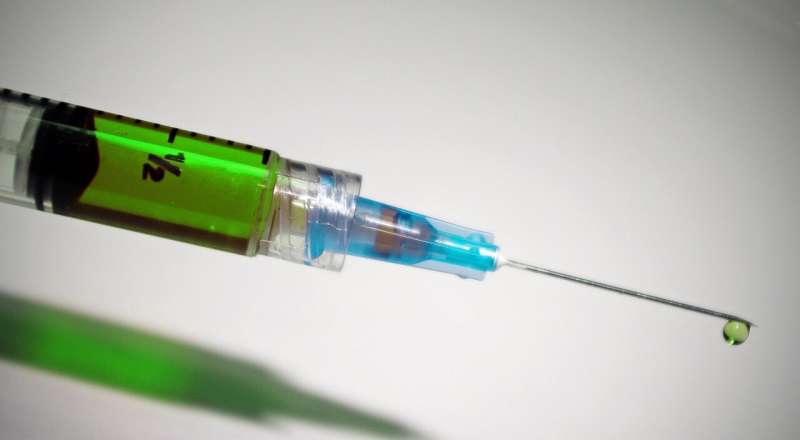
Vaccines work their magic by effectively creating immune cells that are long lived, often for over decades. These immune cells create both a protective barrier that can prevent or minimize re-infection and a memory that allows us to recognize an old invader like a virus and to kill it before it causes disease. The antibody in our blood that is the barrier is made by “long-lived plasma cells” and while the importance of these cells has always been known, how and when they are generated following a vaccination has remained a mystery until now.
A research team led by Dr. Marcus Robinson and Professor David Tarlinton from Monash University’s Immune Memory Laboratory has shown in real time how immune memory cells are stored in the bone marrow at around one single cell per hour for several weeks after immunization. Their work has been published in Science Immunology.
The researchers used a genetic system in mice to map the gradual accumulation of these cells. This system, called timestamping, allows the researchers to indelibly mark all the plasma cells present at a given time after vaccination and then to return later and identify those that have survived and are thus long-lived. By doing this regularly following vaccination, the researchers revealed the history of the accumulation of these long-lived cells, pinpointing when they were made and where they went.
After receiving a vaccination, we remain largely immune to that disease because our bodies provide an ongoing supply of antibodies against the immunized disease—essentially making sure we remain topped up with these antibodies. We have identified the sites in the body where these long-lived plasma cells have been generated (including lymph nodes, tonsils and gut). But how some vaccines make these cells stick around for decades versus those that disappear after a few months is not known. Given the global interest in long-term immunity provided by COVID vaccines, there is an increased urgency to understand this process.
Using a mouse model, the researchers expressed a fluorescent protein (called the TdTomato protein) only in cells specifically producing antibodies against a specific vaccine. Because these cells fluoresced it was possible to track individual cells as they were produced and where they were stored.
The researchers also used a series of tools to identify only those plasma cells that were generated by the vaccine. All plasma cells in the mouse model expressed the TdTomato protein, and among those, they identified the ones that recognized the vaccine. Finally, by using the timestamp, they knew when those cells had been made and thus how old they were.
According to Professor Tarlinton, studying these individual cells as they are born, mature and get stored to protect us against repeat invasion by a particular virus or bacteria “can inform our understanding of how the recruitment of long-lived plasma cells occurs.”
The intricacy of the study has allowed the researchers to determine other aspects of the building up of specific immunity:
- How these plasma cells enter the bone marrow
- Whether these plasma cells must displace other cells when they get stored in areas such as bone marrow
- Or if these cells “find” a niche made vacant by previous plasma cells either dying or moving elsewhere
Mapping of these cells revealed that one particular vaccination in a mouse led to the generation of about 40,000 persisting plasma cells in the bone marrow. These cells, after the initial flourish, then declined at a rate of around 0.1% a day with a half life of about 700 days, providing both an estimate of the duration of protection and identifying for further study the long-lived cells themselves.
According to Professor Tarlinton, understanding how these long-lived plasma cells are generated, live and die “will inform our ability to modulate their recruitment, through different vaccine combinations or delivery strategies—ultimately allowing us to be able to increase the longevity of immunity,” he said.
Source: Read Full Article